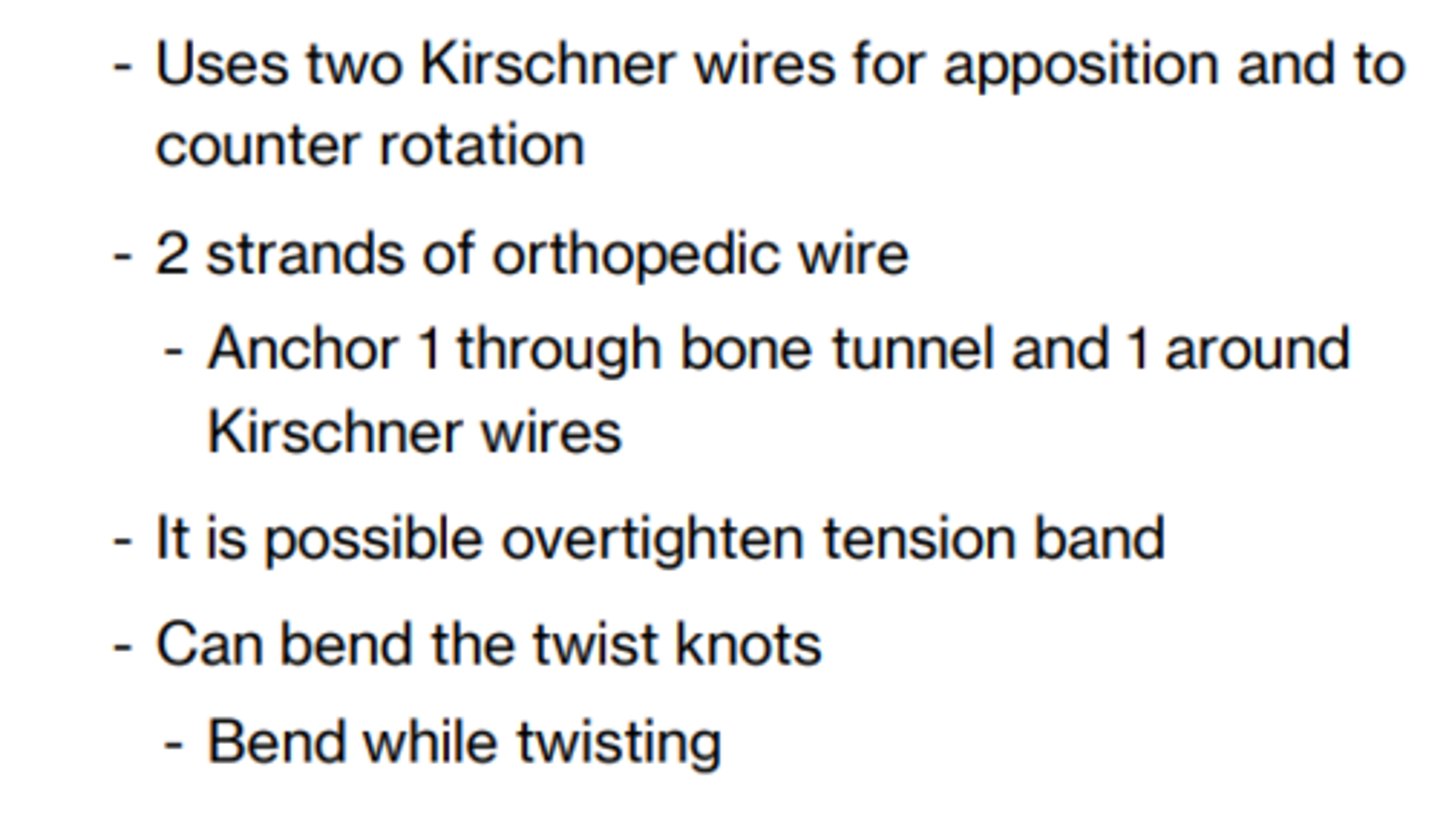Lecture 6: Cerclage Wires
1/31
There's no tags or description
Looks like no tags are added yet.
Name | Mastery | Learn | Test | Matching | Spaced |
|---|
No study sessions yet.
32 Terms
Define cerclage wires.
Heavy gauge stainless steel wire placed circumferentially around the bone to provide fragment apposition and adjunctive fixation.
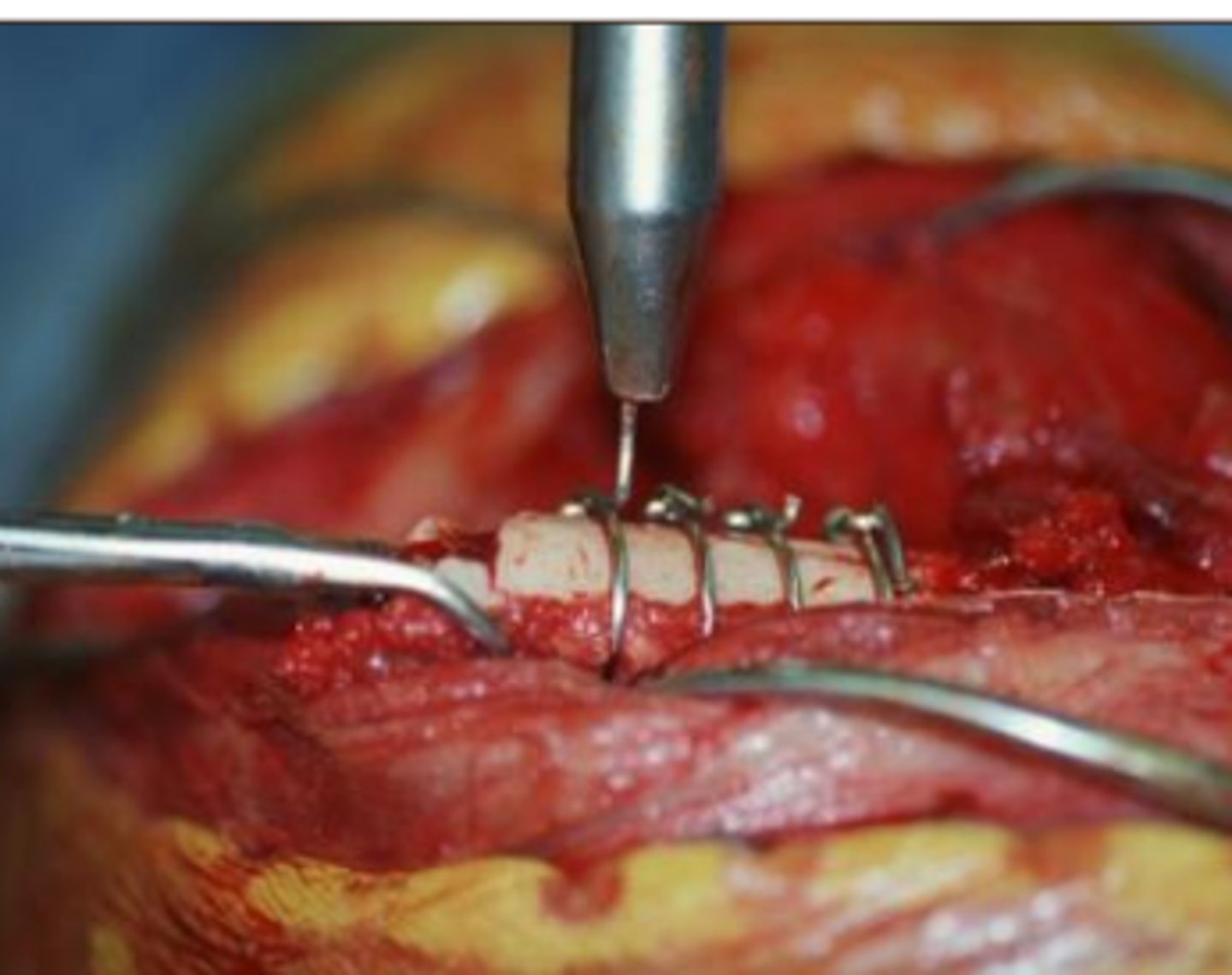
T/F: cerclage wires have adequate stability to resist the forces of weight-bearing alone.
False — they only provide fragment apposition as adjunctive fixation -- - Inadequate as sole fixation
How do cerclage wires need to be placed?
Need to have 360 degree reconstruction of the cylinder of the bone at the level the wires are placed (Wires will be loose with collapse of 1% of the bone diameter)
What are the common diameters of cerclage wire?
18, 20, 22 gauge (large gauge = smaller diameter wire)
Cerclage wires can only be used on what kind of fractures?
Oblique or spiral (2-2.5x in length as the diameter of the bone at the level of the fracture)
Cerclage wires cause shearing of ? fractures
short oblique
T/F: it is okay to use a single wire for a small fracture.
False — never use a single wire; it acts as a fulcrum and stress concentrator (minimum of 2)
Why should multiple cerclage wires be used?
To distribute the forces along the entire length of the fracture.
Wires should be how far apart?
1.0 cm
Wires should be how far from the end of the fracture segments?
5mm
T/F: soft tissue should be interposed between the wire and the bone in order to provide extra cushion.
False — the ST can necrose, the wires will become too loose and fall apart.
Cerclage wires should be what direction relative to the long axis of the bone?
Perpendicular
What tool is used to apply the cerclage wires?
Curved hemstats
What can be done to prevent cerclage wires from slipping in regions where the bone changes diameter?
- Hemi-cerclage wires + skewer pin
- Place Kirschner wire perpendicular to the fracture line. Then, apply the cerclage wire proximal to the K-wire proximally and distal to the K-wire distally
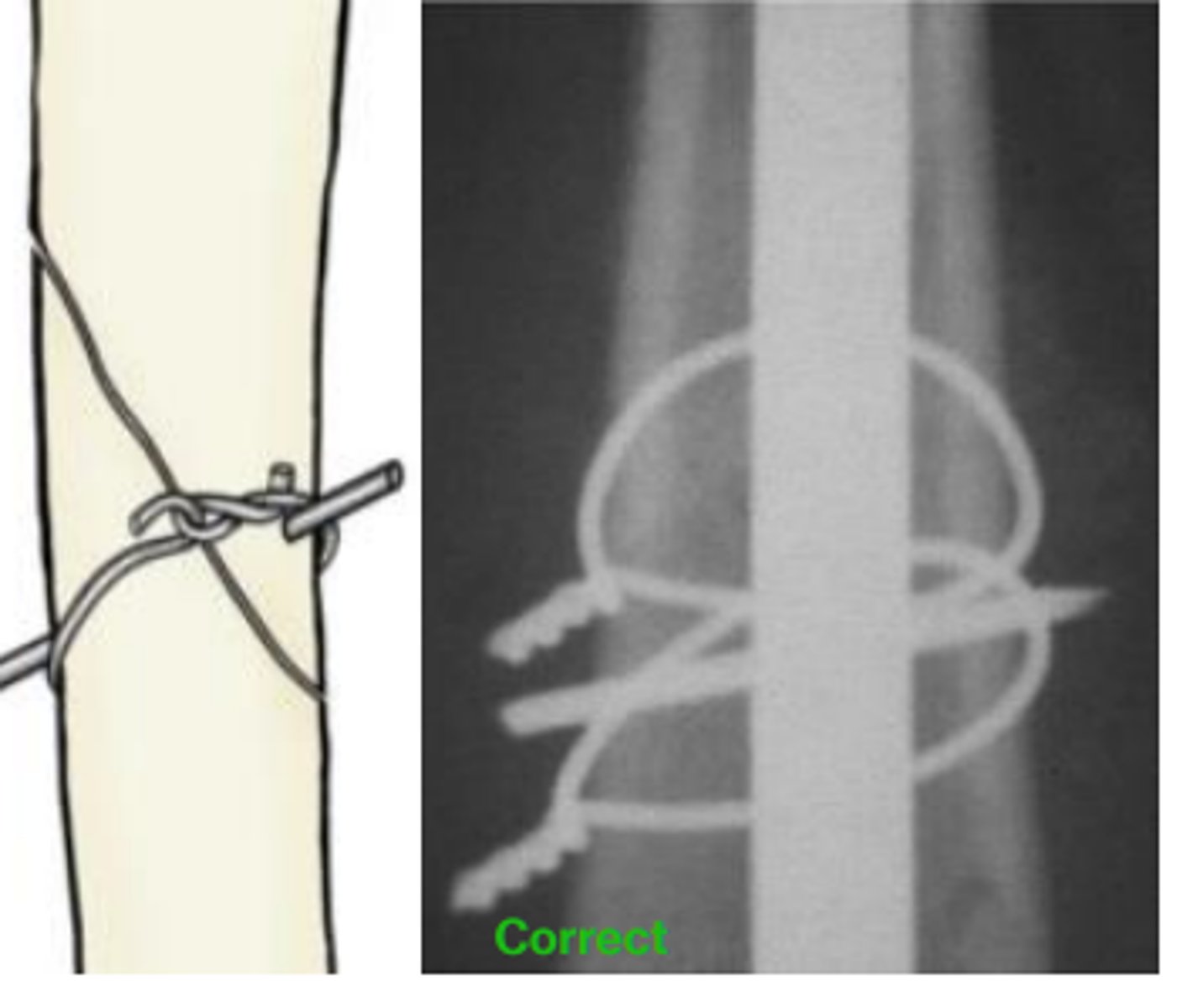
T/F: cerclage wires must be tight.
True -- - Loose wires damage the periosteal vasculature & inhibit bone healing
Describe the application of the twist knot.
- Most common method for securing tension band wires and cerclage
- Both phases of application (twisting and securing) occur simultaneously
- Limits wire tension because wire is bent before it is tight
- Wire is pulled and deformed through multiple plane during application
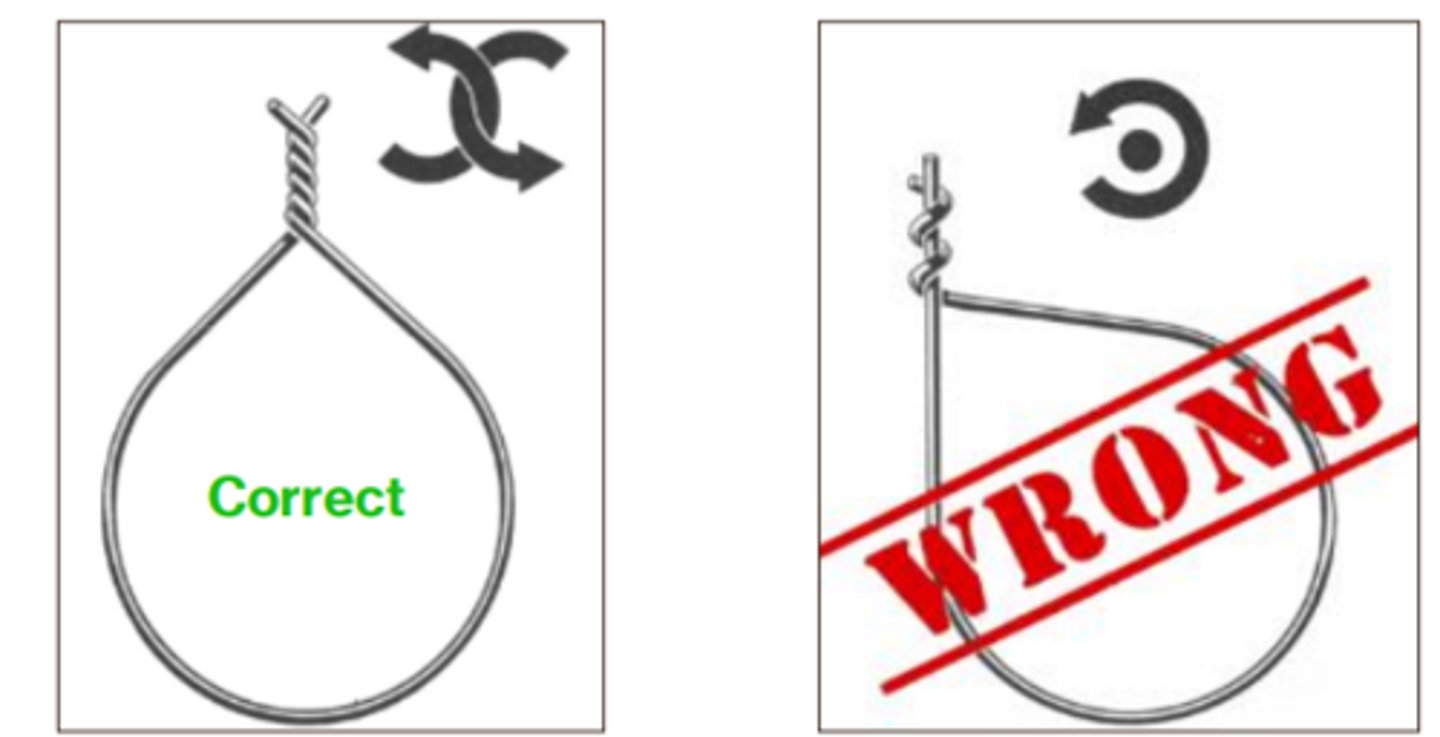
Describe the application of the loop knot.
- Wire is tightened and subsequently secured by bending
- Wire is pulled through a single plane during application

_______ knots produce greater tension than ________ knots.
- Loop
- Twist
single loop cerclage?

double loop cerclage?
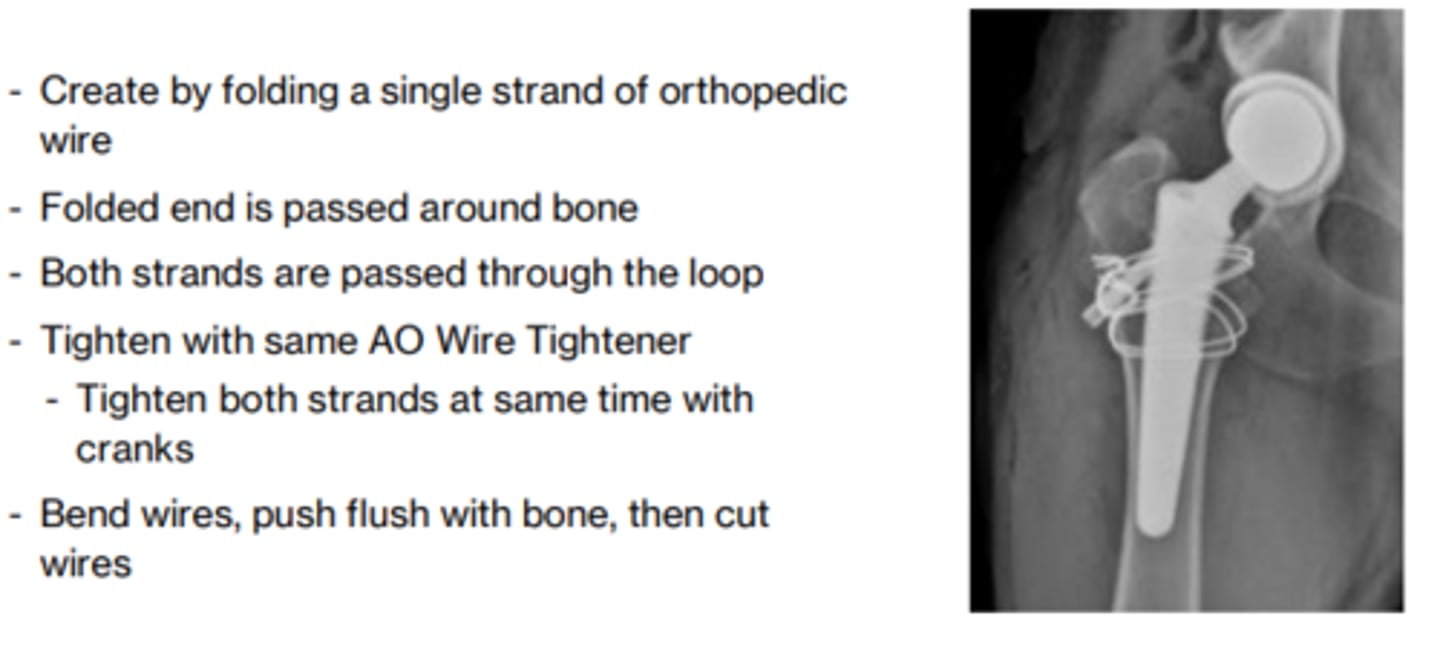
________ knot cerclage wires lost significant tension during if bent over.
Twist
? knots generate more tension than twist knots or single loops
double loop
? knots resist greater loads than twist of single-knots before being loose
double knot
? knots produce greater initial tension
Loop
________ knots provided greater resistance to distractive forces.
Twist
Knot resistance to distraction forces increased with ........
Increasing wire diameter
Give the pros of twist cerclage wires.
- More resistant to distractive forces (resistant to expansion)
- Simpler to apply
- Wires can be re-tightened
- More economical than loop wires
Give the cons of twist cerclage wires.
- Final tension inferior to loop wires
- Situated obliquely to the long axis of the bone
- More cumbersome to apply
- Twist protrudes into the surrounding soft tissue
Give the pros of loop cerclage wires.
- Greater final tension
- Situated perpendicular to the long axis of the bone
- Does not protrude into the surrounding soft tissues
Give the cons of loop cerclage wires.
- Less resistance to distractive (expansion) forces
- Cannot re-tighten wires
- More cumbersome to apply
- Increased cost compared to twist wires
10 commandment of cerclage wires (yes, I know it's a lot, but name all of them) *******
- Wire must be of sufficient diameter
- Need 360 degree anatomic reconstruction
- Fracture must be oblique
- Never use a single wire
- Wires should be 1 cm apart
- Wires should be 5 mm from the end of fracture segments
- No inter positioned soft tissue
- Wires must be placed perpendicular to the long axis of the bone
- Prevent slippage in regions where bone changes diameter
- Wire must be tight
What does pin and tension band fixation do?
- Converts distractive (tensile) forces to compressive forces
- used to stabilize osteotomies and Fractures at traction aphyses
